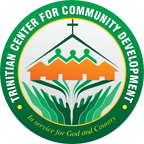DISINFECT YOUR FEED: COMBATING FALSE NEWS AND MISINFORMATION ABOUT HEALTH
REFLECTION by RAE FRANCIS QUILANTANG
_______

Metro Manila and some parts of the country is now under Modified Community Quarantine. But combating false news and misinformation about health is still one of the concerns that netizens needed to address. I am writing this reflection based on one of the webinars I attended for me to remind those who will read this article on the matter that all of us needed to reflect upon.
The rise of digital journalism has released innovative mass media practices that enable to reach large number of audience. However, news media writing, in present time, is considerably in great alteration due to its modern form of communication platforms—such as an open and unlimited accessibility to web and social media pages. Thus, health information is also at risk especially at this time of pandemic.
As the world experiences the sudden impact of COVID-19 and most of people are homebound due to quarantine protocol, the only habit is the endless swiping through newsfeed and exposing masses to various content. Therefore, the rapid spread of misinformation and disinformation in social media is of concern. It may appear harmless, but the higher chance of being unknowing victims or event perpetrators of misinformation is alarming. Fortunately, there are public health professionals that continuously defy and rectify the transmission of false data circulating around the internet pages. The ultimate question is how people, regardless of their social status, would help eliminate this problem just like how the medical frontliners fight against the threat of this virus.
In the Webinar conducted by the Philippine Association for Communication and Media Research, Inc. (PACMRI) which I attended on April 22, 2020, Dr. John Robert Bautista, a research fellow at the University of Texas, Austin, United States of America and an alumni of the Trinity University of Asia, on “Mitigating Health Misinformation during the COVID-19 Pandemic” he explains about how the audience, particularly the netizens, validate as well as methods of correcting pieces of data.
Dr. Bautista pointed out that with the advent of COVID-19 pandemic and the circulation of fake news in the subject particularly in social media, the impact of misinformation and disinformation on health communication is on the rise considering that the audience can freely absorbs materials just in one click. In contrast to political contents, health communication misinformation is easier to mitigate as it is based on facts not opinions according to Dr. Bautista. The media literate—mainly communication professionals— are called to take action to hedge health misinformation and aid guidance in educating appropriate facts. Media literate individuals are also encouraged to participate in mitigating misinformation on COVID-19 accordingly. Beyond checking facts before sharing it, they can also amend misinformed posts from our friends or relatives.
Dr. Bautista suggests the following steps in correcting posts online: comments on the post or direct message the author of the post; the correction should center on the facts; provide alternative views through facts; provide a link of your source. (Make sure that your source is reliable)
As Dr. Bautista compare it—misinformation is like a virus. These forms of false news and misinformation are virally expanding. By proper correction of these pandemonium is the best medicine and treatment to prevent its complication. In other words, utilizing proficient literary vaccine in social media is much needed through educated personnel. Though, it may take decades to prepare and hone netizens, especially the youth, to be responsible media users. For the moment, communication educators can do their part in pacifying and mitigating misinformation through correcting misinformed posts.
To understand the importance of fixing the false online news problem is like how we habitually sanitize ourselves to not to be infected by the virus. The main cause of the rise of false news, misinformation and disinformation is the technology itself—and probably it will be also a solution. But with a close reading of fact checks, our philosophy, and our social and virtual behavior serve as the therapeutic power that could help eradicate the predicament. This may seem easy as it looks like, however, another angle that could possibly associate the severity of mass media virus is how biases and selective exposure reinforce misinformation by majority of the netizens. Hence, lecture or seminars that deals with the cleansing of social media false news is significant through the agency of our research professionals. Therefore, in the end, we are accountable of how we behave and response conjointly responsible as a digital citizen. Stay vigilant. Be informed.
_______
 RAE FRANCIS QUILANTANG is a Junior Lecturer at the Media and Communication Department of Trinity University of Asia. He is teaching Purposive Communication, and Communication Management.
RAE FRANCIS QUILANTANG is a Junior Lecturer at the Media and Communication Department of Trinity University of Asia. He is teaching Purposive Communication, and Communication Management.


 The Trinitian Center for Community Development is the official arm for Community Extension Service that supports Trinity University of Asia in carrying out its Vision and Mission of involving her constituents to live a LIFE that is GOD-centered and in service to the community.
The Trinitian Center for Community Development is the official arm for Community Extension Service that supports Trinity University of Asia in carrying out its Vision and Mission of involving her constituents to live a LIFE that is GOD-centered and in service to the community.